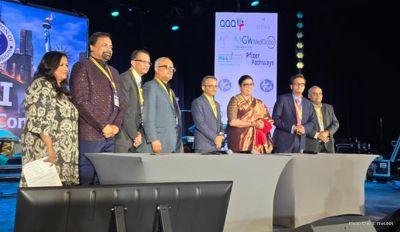A year after COVID-19 forced the first lockdowns, school and business closures and event cancellations across the country, most Americans are not optimistic about a quick return to the way things were before the outbreak. And the public is even less optimistic about when the job situation may return to its pre-pandemic level.
How we did this
Despite recent increases in the shares of Americans who have been vaccinated against COVID-19 – and who say they plan to get vaccinated – just 9% of the public says it will be less than six months before most businesses, schools, places of worship and other public activities operate about as they did before the outbreak. Roughly a third (34%) say this will take between six months and a year.
Nearly six-in-ten (57%) say it will be a year or more before things mostly operate as they did before the pandemic struck the U.S., including 14% who expect it will take more than two years, according to a new Pew Research Center survey, conducted March 1-7 among 12,055 adults.
For the most part, expectations about when life will return to the way it was before the pandemic do not vary widely across demographic groups or by partisanship.
Women (59%) are somewhat more likely than men (53%) to believe that it will take more than a year for public activities to return to the level they were before the outbreak.
Nearly two-thirds of Black Americans (64%) say it will be a year or longer, compared with smaller shares of White (56%), Asian (56%) and Hispanic adults (51%).
Upper-income Americans are the most optimistic about when life when will return to normal: 49% predict that schools, businesses and other public activities will fully reopen in a year or sooner. Fewer middle-income (43%) and lower-income Americans (40%) say the same.
Similar shares of Republicans and Republican-leaning independents (57%) and Democrats and Democratic leaners (56%) say it will take more than a year for life to return to normal in the country. But Republicans are more likely than Democrats to believe it will be more than two years (17% vs. 10%).
When it comes to the nation’s job situation, Americans are even more pessimistic. About eight-in-ten Americans say they expect it will take one to two years (46%) or more than two years (35%) for the job situation to recover to where it was before the outbreak. Just 19% believe it will recover in less than a year.
There are modest demographic differences in these predictions. For example, those who live in rural areas (40%) are slightly more likely than those who live in suburban (34%) or urban areas (31%) to say the job recovery will take more than two years.
While partisans are largely in agreement that it will take more than a year for employment to reach the level it was at before the pandemic, Republicans are more pessimistic: 44% expect jobs to return in more than two years, compared with about a quarter of Democrats (26%).
When is this finally going to end? That’s the question on many minds after a year of living through the COVID-19 pandemic.
But public health experts say we do have an answer, and you’re not going to like it: COVID-19 is never going to end. It now seems poised to become an endemic disease — one that is always a part of our environment, no matter what we do.
“We’ve been told that this virus will disappear. But it will not,” Dr. William Schaffner, a professor at the Vanderbilt University School of Medicine and medical director of the National Foundation For Infectious Diseases, tells CBS News.
The World Health Organization declared COVID-19 a pandemic on March 11, 2020. A year later, the virus has infected 118 million people worldwide and killed over 2.6 million, including more than 530,000 Americans, according to data compiled by Johns Hopkins University. But researchers say there’s simply no track record of infectious diseases being completely eradicated, and everything about COVID-19 shows that it will be no different.
“The more infectious a microbe is, the harder it is to control,” Dr. Tom Frieden, the CEO of Resolve To Save Lives and a former CDC director, tells CBS News. “COVID is very challenging to control, and the new variants suggest that we may end up playing kind of a game of cat and mouse.”
Prior to COVID, people were already used to living with endemic diseases. The flu is one example. Measles is another. Both continue to spread and kill people every year despite decades of vaccination and containment.
Even the virus that causes COVID-19 is just a new type of coronavirus; other coronaviruses had long been circulating and in some cases could cause the common cold. COVID itself has already gone through mutations that made it more contagious and potentially deadlier.











